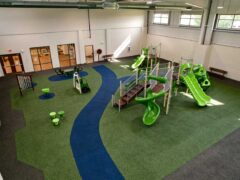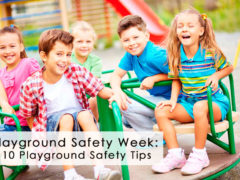Are you creating a new play area or renovating an existing one? You may not have considered how to integrate landscaping into your planning process, but the two are inseparable for a successful playground. Your play area should harmonize with its surroundings, no matter if it’s in a residential community, public park or private childcare facility. By incorporating landscaping into your design, you can maximize benefits for the community, families, and children who use it.
Why is playground landscaping important?
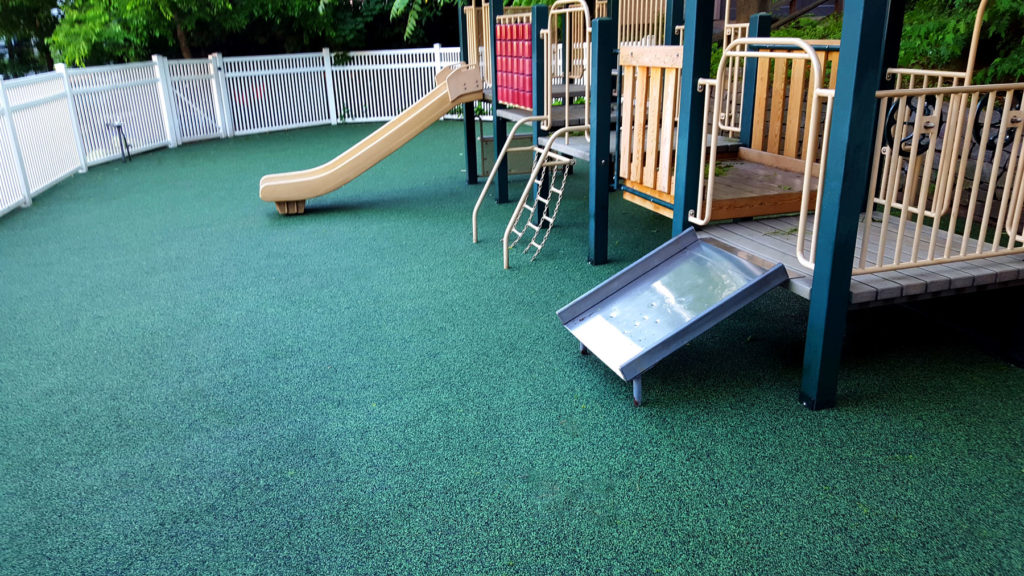
Designing a visually appealing and functional playground can transform public spaces and private institutions. A playground with bright colors and imaginative themes can encourage kids to engage in physical activity and develop social skills.
For example, an under-the-sea-themed playground can spark imaginative play and curiosity about nature, or a castle-themed playset can encourage role-playing and social play.
A well-designed play space can benefit kids and adults alike. Creating a safe and inviting play area can bring families and neighbors together to foster a strong sense of community. Improving your playground’s landscaping can attract the surrounding community and offer immesurable benefits.
6 Tips for Designing the Ultimate Playground Landscape
While you may not be a professional architect with your own landscape design software, creating an incredible playground for your location is a breeze with the right resources. Here are six tips for designing the ultimate play area for children in public spaces, schools, recreational facilities, and beyond.
#1 Break down your budget
Before beginning any major project, it is essential to break down every element of the process and budget for each. Aside from playground equipment, you will need to budget for installation, safety surfacing, and other site amenities. A typical new playground development will cost between $18,000-$35,000, depending on the size of the project. If your budget is on the lower end, make sure you don’t sacrifice quality and safety to cut costs. Consider doing the project in phases as your funding permits.
#2 Choose the right location for your play space
The first step in building a playground should always be locating the perfect spot. Whether you already have a location in mind or are deciding between several options, there are some crucial factors to weigh.
Climate:
Your climate is an important consideration when choosing the type of playground equipment and the best surfacing options for your location. Will your playground face weather challenges like extreme winds or glaring afternoon sun? Will your playground be subject to snow and freezing over winter? All components should be made from a material that is going to be durable and stand up to your unique weather conditions.
Soil and drainage:
Is the site suitable for proper drainage given its soil and slope conditions? Proper drainage is essential to maintain equipment’s integrity, safety, and usefulness and surfacing in playground designs. In order to prevent standing water from causing premature aging and deterioration of surfacing and play equipment, a plan must be put in place to effectively move water out of the area. Failure to do so could result in compromised concrete footings, shortened lifespan of metal components, and the growth of mold and mildew.
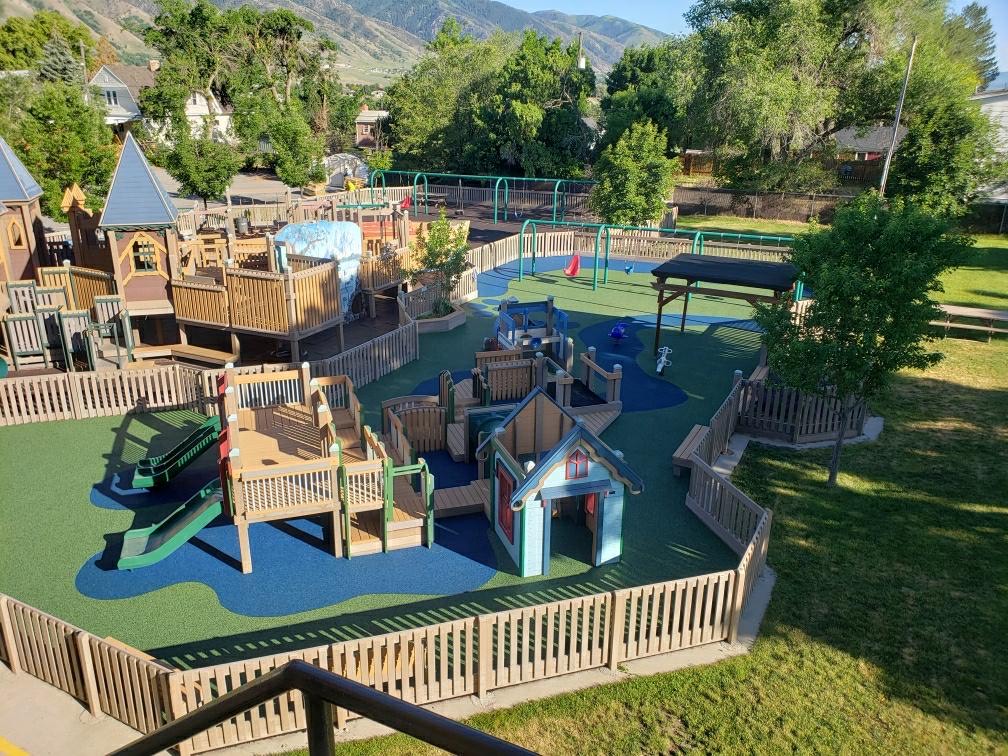
It may also diminish the impact attenuation of the surfacing and ultimately render the play area unusable, cutting short the lifespan of your investment. adventureTURF can help you select surfacing options that allow drainage to get the most out of your play area for years to come.
Land features:
Playground planning depends largely on the existing features of the chosen location. Trees and shrubbery can be incorporated into the design, especially for nature-themed playgrounds. Trees also provide natural shade and protection from the sun. Garden areas can attract wildlife and add to the beauty of the play space. However, be mindful of plant life that may attract ticks, wasps or other pests.
Accessibility:
Playgrounds at a public park, school, child care facility or rec center should be enjoyed by children of all abilities. To create an inclusive playground, choose a location that can be easily accessed with a wheelchair and is easy to maneuver with mobility devices. Inclusive playground design includes beveled edges, ground-level play components, and routes for wheelchairs. At adventureTURF, we only work withmaterials that can be installed to comply with the Americans with Disabilities Act (ADA).
#3 Browse landscape architecture ideas
It’s important that you go into the playground planning and design process with a vision for your outdoor spaces. What is the theme or focus of your playground? Landscape design elements depend on your design philosophy for your play space. Some common playground design ideas include:

- Inclusive play
- Outdoor fitness/active play
- Environment/nature theme
- Infant/early childhood
- Educational/outdoor classroom
Deciding on a theme for your playground will help you determine the most appropriate pieces of equipment and furniture for your play space. If you need more playground ideas and a more in-depth landscaping designing guide, check out Playground & Landscape or Landscape Architecture Magazine.
#4 Select the best play equipment for your needs
The theme of your playground will serve as the inspiration for the equipment you select. First, there are a few practical considerations to take into account:
- How many children will be using the equipment?
- What age groups will be playing on the playground?
- Are you aiming for an accessible playground that can accommodate children with physical disabilities?
- Do you have spatial restraints?
Children go through stages of rapid development, both physically and mentally. Whether you realize it or not, the playground plays a vital role in this development. Aim to select play equipment that fosters different types of play:
- Social play
- Imaginative play
- Solitary play
- Educational play
- Physical/active play
The playground is also a great place for children to get much-needed exercise, build muscles, and develop fine and gross motor skills. If your location allows, incorporate open spaces for team sports and other types of active play.
#5 Determine the best materials for your equipment
A critical piece of playground planning is choosing what materials to incorporate. Each type has its pros and cons, and it is important for kids’ safety that their equipment is made from appropriate materials. While you are designing your play space, think about longevity, maintenance, aesthetics, and safety. Some of the popular choices include:
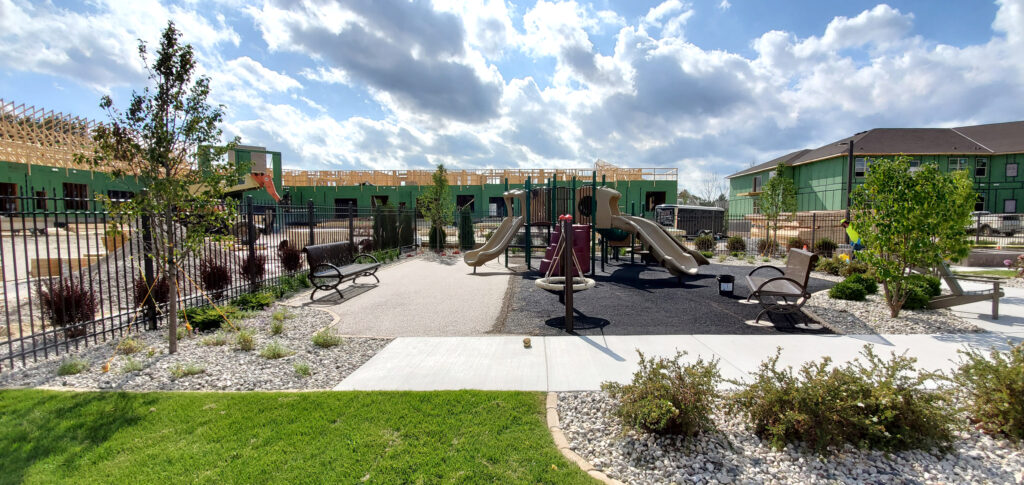
Metal
- Pros: durable, long-lasting, can be painted to suit any color scheme.
- Cons: vulnerable to rust, can get dangerously hot in the sun.
Plastic
- Pros: durable, under all types of weather conditions, low-maintenance, generally safer as it is not prone to rust or splintering
- Cons: depending on the type of plastic, color can fade and it may not be as sturdy as metal equipment.
Wood
- Pros: offers a natural look, will not get hot in the sun, can last if properly treated
- Cons: less durable than metal or plastic, prone to splintering or chipping
Whatever material you choose, make sure that you invest in quality so that generations of kids can enjoy the play space with minimal maintenance.
#6 Choose the right playground surfacing
Choosing the right playground surface is crucial to ensuring the safety of children. The best surfacing for a park may not be the best for a school or daycare. Researching your options and seeking the advice of experts is key. Our playground surfacing experts at adventureTURF can help you identify which type of surface best suits the needs of your specific site and visitors.
Variables to consider when selecting a surface include initial cost, installation cost, long-term durability, maintenance costs, visual appearance, degree of safety, and ADA compliance.
To ensure child safety, it’s important to choose a surface that is soft and thick enough to minimize injury from falls. Other factors such as age range, choking hazards, and design theme should also be taken into account. Maintenance and budget constraints must also be considered. Incorporating multiple types of surfacing may be necessary to fully meet your needs.
Safety surfacing not only improves safety but also accessibility for children with mobility challenges. To comply with ADA regulations, ground cover materials must accommodate all visitors. Take a look at our complete guide to surfacing pro’s and con’s for more information on all of your options.
Create inclusive playgrounds

An inclusive and accessible playground aims to provide all children a fun and safe experience while playing alongside their peers, regardless of their physical abilities. To achieve this, you need to remove any potential barriers that may hinder a child in a wheelchair or other mobility device from accessing playground equipment.
Take wheelchair maneuverability into account during the landscaping design process to create an accessible design for a newly constructed playground. An inclusive playground also includes accessible pieces of play equipment that can be reached from ground height. Other important components include accessible ground routes, firm ramp surfaces, transfer systems, and unitary playground surfacing. adventureTURF is passionate about developing inclusive playgrounds, and we can help you navigate ADA-compliant playground design.
Get on your way to a flawlessly designed playground!
A playground isn’t just for kids! A well-designed playground landscape can serve people of all ages. By integrating landscaping into your playground design, you will not only have a safe and exciting place to play for your kids, but you will also enhance the surrounding community as a whole. Adults can gather to socialize and enjoy the scenery, older children can enjoy recreation activities, all while younger children make good use of the play equipment.
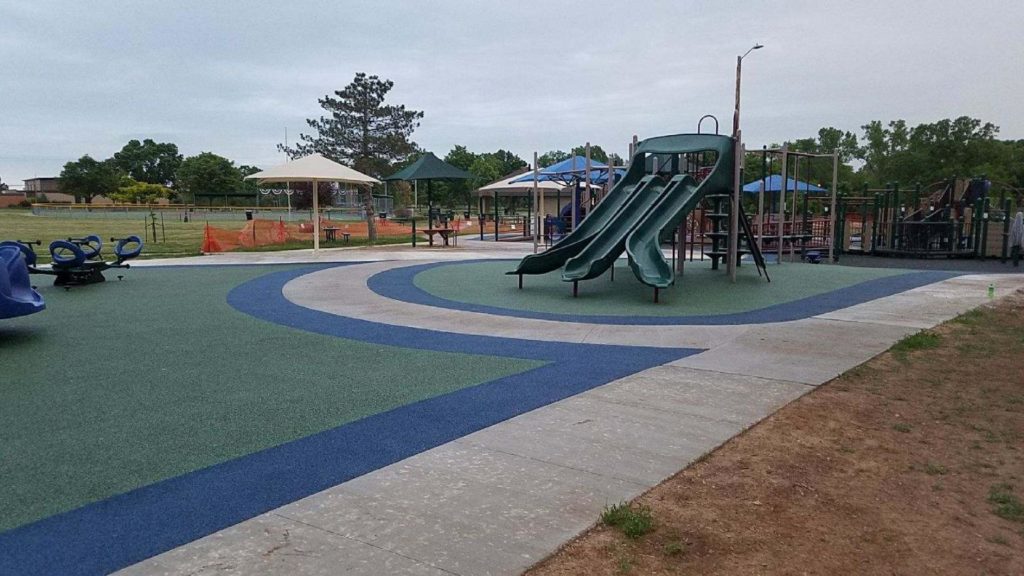
Proper playground planning will ensure you maximize your space and budget, whether your playground is in a confined urban location or a wide-open natural space. Contact our team at adventureTURF to get moving with your playground landscape design project today!

